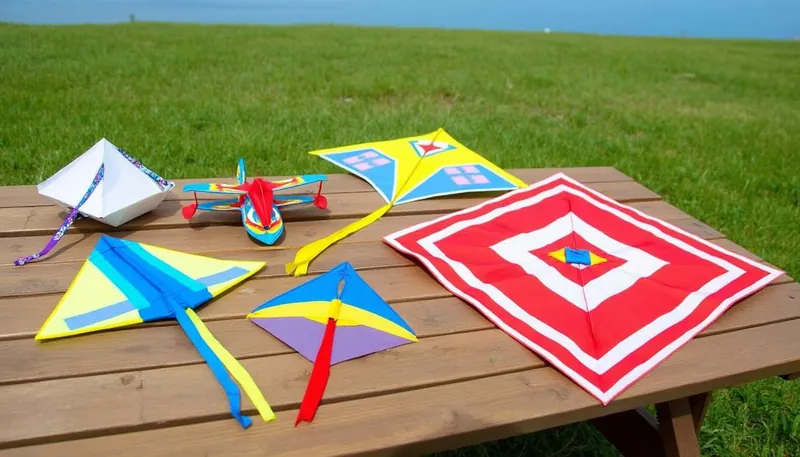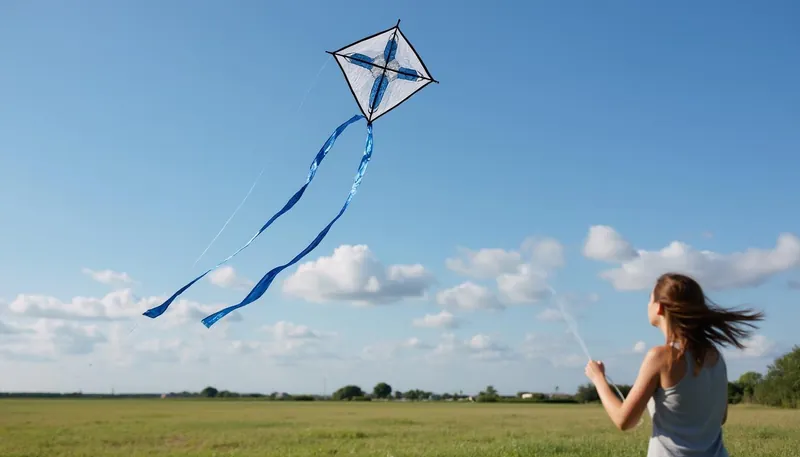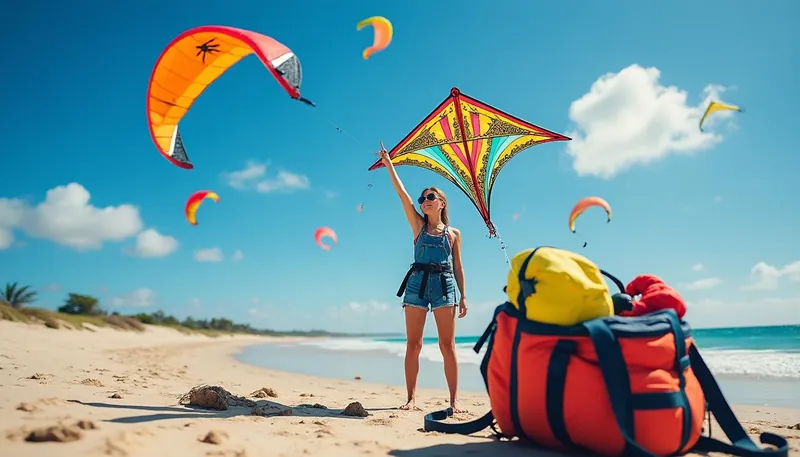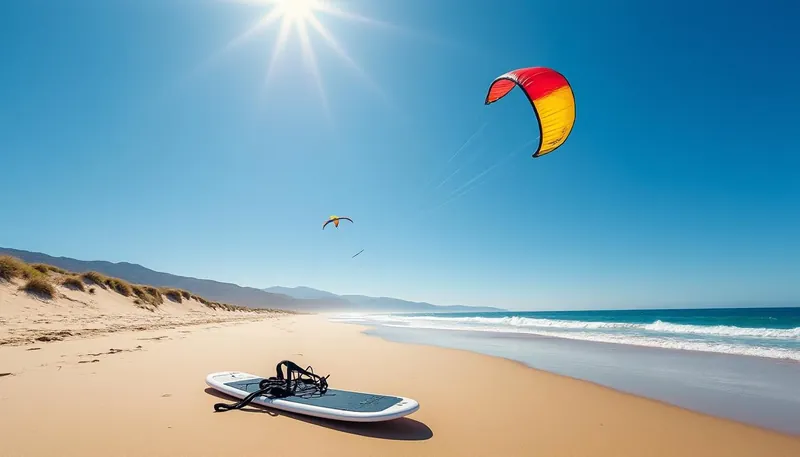Kite flying is an exhilarating adventure that has attracted many outdoor enthusiasts. Whether you’re looking to feel the rush of the wind while gripping the handles of a kite or simply wanting to enjoy a peaceful day in the park, the thrill of soaring high is undeniable. With numerous types and models available, choosing your first traction kite can be overwhelming. This guide aims to simplify the process by highlighting key aspects to consider and offering insights to ensure a fun and satisfying experience as you take your first steps into the world of kite flying.
In Brief:
- Understand your skill level and choose a suitable kite type. 🪁
- Consider local wind conditions before buying. 🌬️
- Determine the right size and material for your kite. 🌟
- Keep budget considerations in mind while exploring options. 💰
- Don’t forget essential accessories for a successful experience. 🛠️
Understanding Your Skill Level for Kite Selection
When embarking on your kite-flying journey, it’s essential to align your choice with your skill level. Choosing a kite that matches your proficiency can significantly enhance your experience. Let’s break down how to approach this:
Beginner: A Soft Landing into Kite Flying
If you’re just taking off in the kite-flying realm, start with kites that are renowned for their ease of use. Basic diamond or delta kites are light and stable, providing a gentle introduction to the sport. These designs offer a forgiving nature, allowing you to learn the ropes without fighting against an overly powerful kite.
- Diamond Kites: Classic design, simple to handle, perfect for feeling out the wind. 💎
- Delta Kites: Excellent stability and can handle varying wind conditions. 📈
Intermediate: Taking Flight
- Parafoil Kites: These soft kites allow for greater control and performance. 🌪️
- Word of Caution: Ensure you’re comfortable with basic controls before stepping up. 🚫
Advanced: The Sky is Your Playground
If you’re already part of the seasoned kite-flying community, stunt kites may pique your interest. These thrillers require advanced skills for impressive aerial maneuvers but are sure to challenge and excite you.
Now that you have an understanding of how skill levels influence your choice, it’s crucial to know the types of kites available.

Exploring Different Types of Traction Kites
Kites come in various designs and structures, each catering to specific flying conditions and levels of expertise. Understanding the types will help you make an informed decision:
| Type of Kite | Best For | Attributes |
|---|---|---|
| Diamond Kites | Beginners | Easy to fly, stable, lightweight |
| Delta Kites | Beginners to Intermediate | Good in various wind conditions |
| Parafoil Kites | Intermediate to Advanced | Maneuverable and transportable |
| Stunt Kites | Advanced | Dual-line control for tricks |
While each type has its unique features, the best choice will depend on your individual preferences and the type of flying experience you’re seeking.
Assessing Local Wind Conditions
Your local wind conditions play a pivotal role in determining the most suitable kite for you. Before purchasing, it’s vital to analyze the typical wind patterns in your area:
Light Wind Conditions
If you reside in an area with gentle breezes that barely tickle the trees, lightweight kites like delta or diamond kites will excel. These kites can perform wonderfully even when the wind decides to take a day off.
Moderate Wind Conditions
For most, moderate wind conditions are ideal. Kites like parafoils and some delta models flourish in this environment, providing enough lift without overwhelming you.
Strong Wind Conditions
If your local weather mirrors a wind tunnel, think about kites designed for high speeds, such as those from brands like Slingshot or Ozone. Delta kites are solid choices for handling strong winds while offering stability.
- Assess Your Environment: Factor in safety—avoid flying in stormy or gusty weather. ⛅️
- Find Keys to Stability: Ensure that your chosen kite’s features are congruent with your local wind conditions. 🧭

The Importance of Size in Kite Selection
Size matters when it comes to kites. It directly influences handling, lift, and performance. Understanding the size options will help you make the best selection:
Small Kites
Small kites are generally easier to handle, making them suitable for beginners and kids. They provide less power and responsiveness, which can be comforting as you learn the basics.
Medium Kites
Medium-sized kites hit the sweet spot for most flyers. They balance stability and maneuverability, making them a versatile choice for different wind conditions.
Large Kites
Large kites, often enjoyed by experienced flyers, come with increased power and require more advanced control. Perfect for stronger winds, but challenging for novices.
| Kite Size | Skill Level | Recommended Wind Conditions |
|---|---|---|
| Small (1-2 m) | Beginner | Light winds (3-7 mph) |
| Medium (3-5 m) | Beginner to Intermediate | Moderate winds (8-15 mph) |
| Large (6+ m) | Advanced | Strong winds (15+ mph) |
Choosing the correct size not only impacts your kite-flying comfort but also enhances your overall experience as you soar through the skies.
Materials and Durability: What to Look For
The durability of your kite directly ties to its materials—so paying attention to construction is crucial. Here’s what to keep in mind:
Frame Materials
Choose kites with frames made from durable materials like fiberglass or carbon fiber, known for their strength and flexibility. Avoid low-quality plastics that can snap under pressure.
Sail Materials
Sail materials such as ripstop nylon or polyester are ideal as they resist tearing and are less likely to be damaged by wind or minor crashes. Quality sails contribute to the kite’s overall lifespan.
- Check for Reinforcements: Look for additional supports at stress points, which can greatly enhance durability. 💪
- Prioritize Quality: Invest in materials that withstand wear and tear, especially as a beginner learning to fly. 🛡️
Budget Considerations and Additional Equipment
Your budget will also play a major role in your kite selection. Kites vary significantly in price, but investing wisely ensures quality without burning a hole in your pocket.
Budget Kites
If you’re on a tight budget, entry-level kites can be found for around $20-$50. These usually provide sufficient conditions to get you started without breaking the bank.
Mid-Range Kites
For those willing to invest a little more, mid-range kites range from $50-$100, offering better durability and performance, ideal for beginners and intermediates.
High-End Kites
For those who are serious about kite flying and intend to take it to the next level, premium models from brands like Cabrinha or Naish can cost over $150, but they come with advanced features and enhanced performance.
| Budget Tier | Price Range | Best For |
|---|---|---|
| Budget | $20 – $50 | Beginners |
| Mid-Range | $50 – $100 | Beginner to Intermediate |
| High-End | $150 + | Advanced Flyers |
Along with the kite, don’t forget essential accessories, such as quality kite lines, a bag for storage, and safety gear like sunglasses and sunscreen for those sunny days.
What is the best type of kite for beginners?
Beginner kites like diamond or delta kites are ideal due to their stability and ease of use.
How do I choose the right size of kite?
Select the size based on your skill level and local wind conditions, with medium kites being suitable for most beginners.
Are expensive kites worth it?
Higher-end kites typically offer better performance and durability but can be more suited for advanced users.


